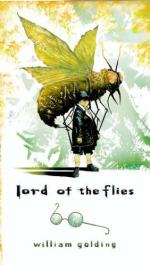|
This section contains 1,049 words (approx. 4 pages at 300 words per page) |

|
Lord of the Flies: Golding's Views on the Evil Essence of Mankind
Summary: Analyzes the novel, Lord of the Flies, by William Golding. Describes how Golding shares his insightful views on the true essence of mankind. By creating a microcosm of young boys stranded on an island, the author examines the boys' natural behavior and parallels it to that of society. Through the symbolic use of the conch shell, the weather, and the color red, Golding presents his conviction that man is innately evil.
The intrinsic nature of man is a controversial subject of debate. In the novel Lord of the Flies, William Golding shares his insightful views on the true essence of mankind. By creating a microcosm of young boys stranded on an island, the author examines the boys' natural behavior and parallels it to that of society. Through the symbolic use of the conch shell, the weather, and the color red, Golding presents his conviction that man is innately evil.
The use of the conch shell throughout the novel enables Golding to develop his observations about life. The conch shell represents the government and rules that the boys create for themselves. It is the only basis for order and structure on the otherwise chaotic island. The conch is first introduced when its "deep, harsh note" gathers all of the boys together for their first assembly (17). These assemblies are their own...
|
This section contains 1,049 words (approx. 4 pages at 300 words per page) |

|


